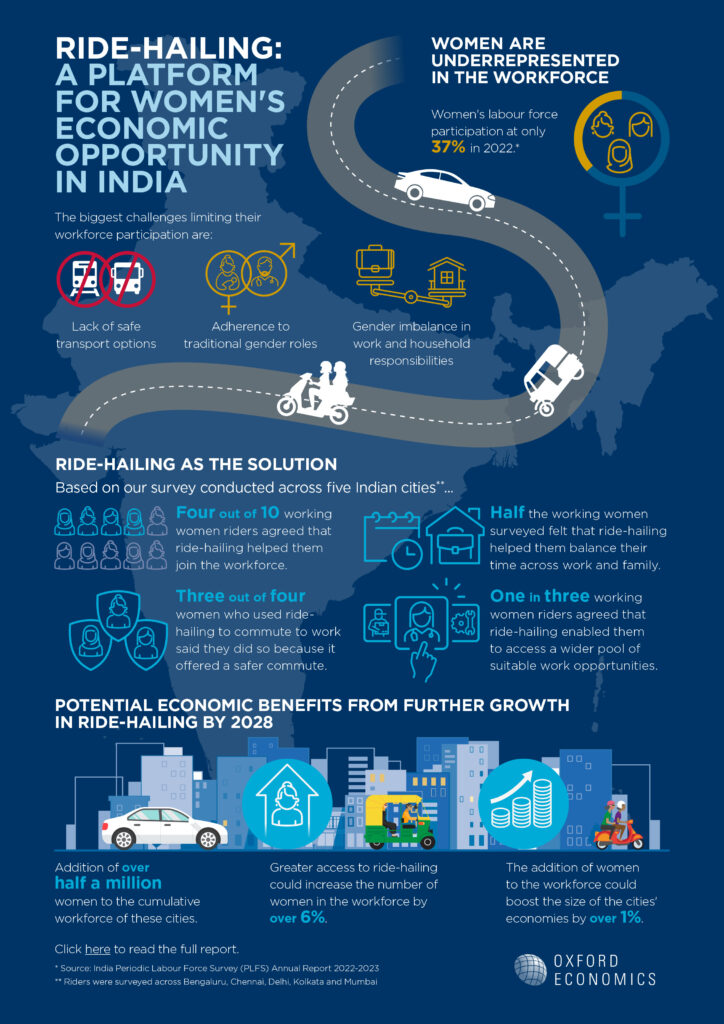Empowering Women, Transforming Economies: The Impact of Ride-Hailing in India
Written byAccess to ride-hailing apps like Uber is projected to increase the female workforce by over 6% in India’s top five cities by 2028. This surge is a result of the mobility boost provided by ride-hailing services, which is anticipated to bring in over half a million more women into the workforce, fostering a boost to the size of these cities’ economies by over 1%.
These are some of the key findings from a groundbreaking research report by Oxford Economics entitled “Ride-Hailing: A Platform for Women’s Economic Opportunity in India” which examines ways in which more Indian women can enter into the workforce. The report underscores the important role of mobility options in reshaping gender labour dynamics, and how innovative solutions are helping expand opportunities for women.

The research report also draws from a survey conducted across five Indian cities. In partnership with Uber, Oxford Economics conducted a survey of Uber riders to gain a comprehensive understanding of the ride-hailing behaviours of women and men across five cities in India—Bengaluru, Chennai, Delhi, Kolkata, and Mumbai. It reveals interesting insights into the impact of ride-hailing on women’s workforce participation:
- Joining the Workforce: Four out of 10 working women riders agreed that ride-hailing enabled them to join the workforce, helping women overcome some of the key barriers to participation.
- Work-Family Balance: Half of the working women surveyed felt that ride-hailing was a crucial factor in helping them strike a balance between work and family responsibilities, providing them with the flexibility they needed.
- Safety as a Priority: A staggering 75% of women who used ride-hailing to commute to work cited safety as a primary reason. This reflects the critical role ride-hailing plays in ensuring safe and secure transportation options for women.
- Access to Opportunities: One in three working women riders agreed that ride-hailing enabled them to access a wider pool of suitable work opportunities, broadening their horizons and career prospects.
Women in Indian cities have lower labour force participation rates than their global peers. Compared with a worldwide female labour force participation rate of 47% in 2022, the figure for India was just 37%. As per the report, the two biggest challenges to women’s mobility are a lack of access to safe transport and the current imbalance in their work-family arrangements.
Surveys carried out as part of this study show that women’s participation in the workforce in India remains lower than the global average, and the gap with men much larger. One of the most important reasons being the lack of access to safe transport and the current imbalance in their work-family arrangements.
“The app has given me the ability to be self-reliant. I am able to contribute towards my household even as I juggle work and caring for my one-year-old”, says Ashiya, a young mum of a daughter is quoted in the report as saying.
Efforts to close these gender gaps can bring substantial benefits to the individual, their households, and the wider economy. Uber stands committed to foster economic opportunities and advance the dialogue to reduce India’s gender commute gap.